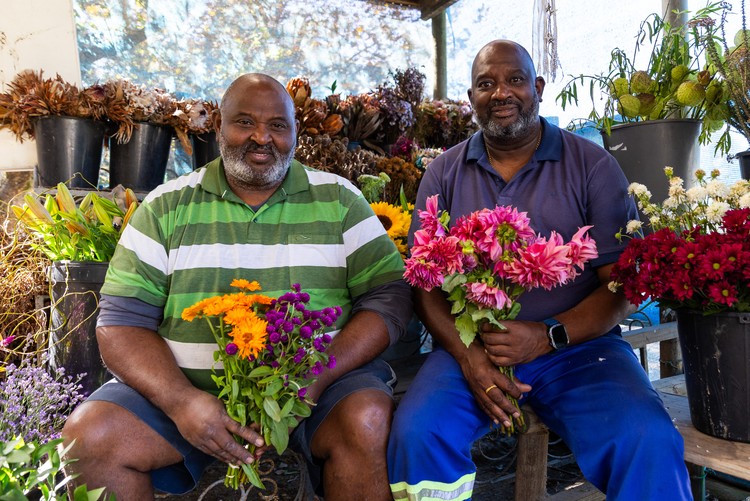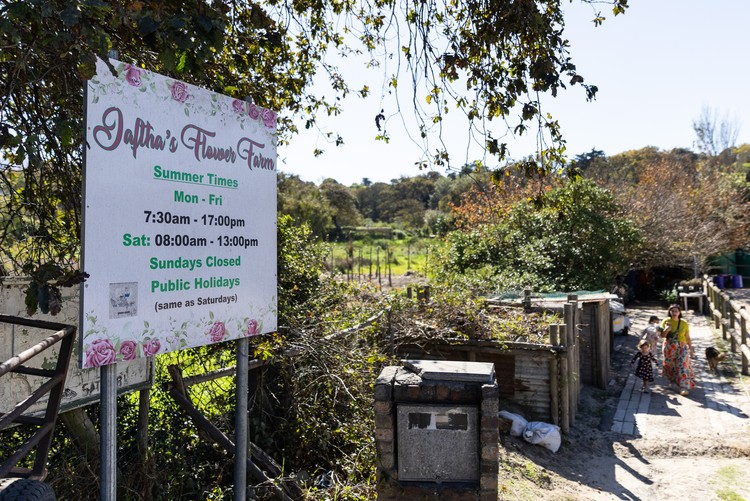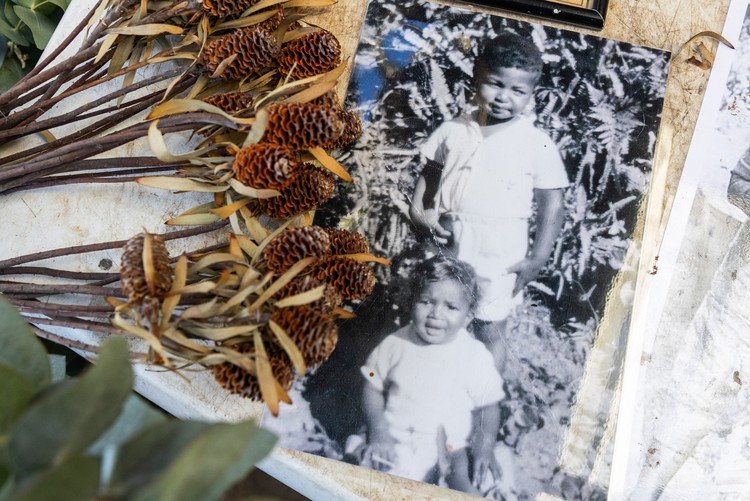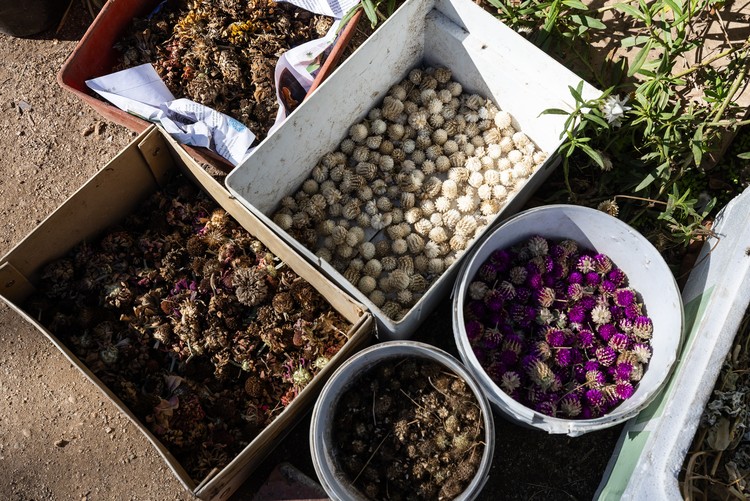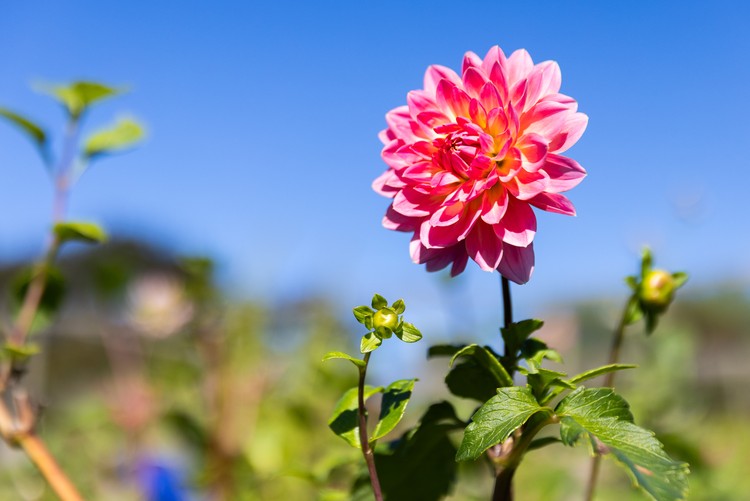Flower farm keeps Constantia’s coloured heritage alive
Jaftha brothers help heal a history of land dispossession
Charles and Malcolm Jaftha are part of a fifth-generation flower farming family.
Hundreds of coloured families were forcibly removed from Constantia in the 1960s and ‘70s under the apartheid Group Areas Act but a fifth-generation flower farming family is bringing their rich history to life.
Jaftha’s Flower Farm is run by brothers Charles and Malcolm Jaftha, whose family has farmed flowers in the Constantia Valley since the 1800s.
Their land, which they have leased from the City of Cape Town since 1985, is blooming with dahlias, arum lilies, freesias, watsonias, snapdragons, and many more.
Charles Jaftha said his father, Moses Jaftha, started growing flowers again in Constantia when he returned in the 1980s to work as a butcher at a farm stall, now Peddlars restaurant. It was the height of apartheid but with the help of the white owner of the Cape Farmstall, Moses managed to lease land from the council to farm flowers. The family’s flower shop opened in 2008.
The Jaftha’s Flower Farm is in Constantia. They hold tours on their farm where they educate people on the history of Constantia and flower farming.
The Jaftha family “pride and joy” is the dahlia, of which they grow many types. It is what the Jaftha family is known for, said Charles. They grow dahlias from bulbs that have been with the family for more than 60 years.
The Jaftha brothers learnt to farm flowers from their parents and grandparents. “The old people used to say: you steal with your eyes,” said Charles. He said they learnt “by watching them and what they were doing”.
“When I started back here with my dad, I could [remember] how I used to do it with grandfather back in the day … And we still do it the same way as back then,” he said. They farm using traditional methods and without the use of pesticides.
The farm supplies flowers to florists, B&Bs, restaurants, and smaller flower sellers. They grow both summer and winter flowers, which means they sell throughout the year.
When their family was forcibly removed in the late 1960s, they were moved from a large plot of land. The palm tree which used to stand in front of their house is still there, but not the house, said Charles. He recalls how their family was split up. Their grandmother was moved to Manenberg, the Jaftha brothers and their parents to Parkwood, and their uncle to Retreat. It was difficult, because before they “lived not a hundred metres from each other”, and afterwards they were so far apart.
An old photo of Charles Jaftha (top) and his younger brother Malcolm. Charles said that in this photo he was three or four years old and that it was taken before they were forcefully removed.
Many other flower-growing families were also forcibly removed.
“Some of the older folk couldn’t come to terms with it. They were very heartbroken,” said Charles. He said many moved from a smallholding in Constantia to flats or places with small yards. They could not take all their belongings and had to leave it behind.
Remembering these families is important to the Jafthas, who helped set up the Constantia Heritage and Education Project (CHEP), which tells the stories of the Constantia forced removals. This includes the Oral Histories Project, where former residents are interviewed and their stories recorded for future generations. CHEP also hosts educational workshops for schools and youth about the history of Constantia, and archives historical photos and videos.
He said they are looking to open a heritage museum on the farm later this year, for which they are raising money.
Azzara Makan, who is employed by the Jafthas to run heritage tours on the farm, said the tour explains the Jaftha family story, the history of Constantia, and of the history of flower farming among the coloured families.
Makan said there’s a guided walk through the fields, and people interested in growing flowers have a chance to ask questions.
A collection of seeds that the Jaftha farm is drying and saving for planting.
She said nearly 300 people came for the guided tour on Heritage Day last year.
At the flower shop at the entrance to the farm, Jaftha took out old photos and maps of the area. One photo was of his dad on his wedding day standing in front of the old palm tree at their former family home. Another shows the two brothers when they were young children.
They have a large archive of photos that will be displayed in the museum. It will also serve as a space for workshops, exhibitions, and for other families to share their stories of their heritage.
“There are a lot of families who have these stories as well, and they can come sit and tell their stories,” he said.
Their farm is blooming with dahlias, arum lilies, freesias, watsonias, snapdragons, and many more flowers.
Support independent journalism
Donate using Payfast

Don't miss out on the latest news
We respect your privacy, and promise we won't spam you.
© 2025 GroundUp. This article is licensed under a Creative Commons Attribution-NoDerivatives 4.0 International License.
You may republish this article, so long as you credit the authors and GroundUp, and do not change the text. Please include a link back to the original article.
We put an invisible pixel in the article so that we can count traffic to republishers. All analytics tools are solely on our servers. We do not give our logs to any third party. Logs are deleted after two weeks. We do not use any IP address identifying information except to count regional traffic. We are solely interested in counting hits, not tracking users. If you republish, please do not delete the invisible pixel.

